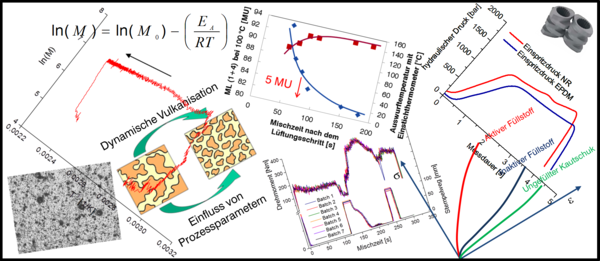Department Processing Methodology (VT)
Processing Methodology at DIK focuses on continuous and discontinuous compounding technology - including extrusion and injection molding - as well as researching and developing new types of elastomers based on nanocomposites. The wide range of laboratory and technical equipment at its disposal enanbles the department to engage in basic research, while also allowing for the analysis and optimization of manufacturing processes in close alliance with industry.
Projects are carried out in tight cooperation with industrial partners. All told, the spectrum extends from short-term orders for individual business partners all the way through to comprehensive bilateral or multilateral projects funded by industry and long-term projects supported by public institutions. In rubber technology, it is frequently hard to draw a distinction between process and material issues. For this reason, the activities of Processing Methodology tie in closely with the scope of activity of DIK´s remaining material-oriented departments. This creates ideal conditions for successfully accomplishing the respective tasks.
Head of department

Dr.-Ing. Heike Wittek

Prof. Dr.-Ing. Edmund Haberstroh
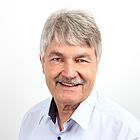
Main research topics
- Additive Manufacturing/3D-printing with elastomers
- Adhesion of elastomer-thermoset-composites using 2-component injection moulding
- Investigation of mixing efficiency regarding distributive mixing using Laser Induced Breakdown Spectroscopy
- Digitalization strategies in rubber processing
Call for projects
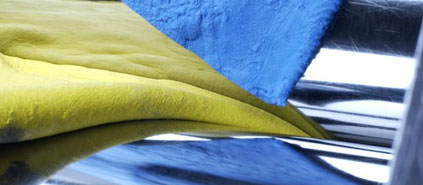
Mixing processes
- Discontinuous processes
- Mixing with internal mixers and two roll mills
- Continuous processes
- Mixing with twin-screw extrusion lines
- Compounding of thermoplastic elastomers (TPE/TPV) with successive cold-granulation
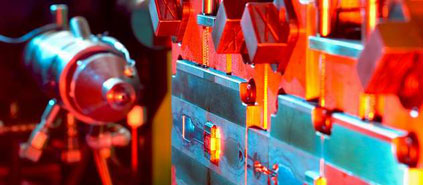
Manufacturing processes
- Bubble-free calendering
- 2-component injection moulding
- Rubber/metal
- Thermoplast/elastomer
- Thermoset/elastomer
- Elastomer injection moulding
- One-/twin-srew extrusion
- Additive Manufacturing / 3D-printing
- "Fused Filament Fabrication" for high viscous rubber compounds
- "Direct Ink Writing" for low viscous rubber compounds
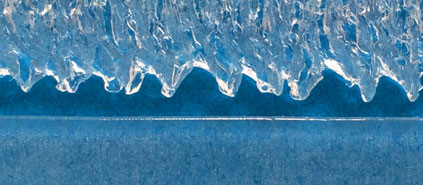
Processability of rubber compounds
- Vulcanization kinetics
- Rheological behaviour using high-pressure capillary viscometer (HKR)
- Detection of flow anomalies (e.g. wall slippage effects)
- "Practical" rheology using a capillary nozzle in extrusion processes
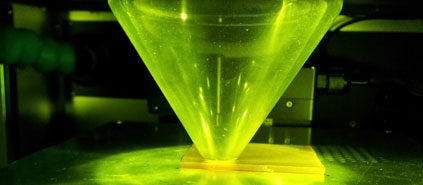
Mixing quality
- Dispersion of fillers - light microscopyanalysis of vulcanised rubber compounds
- with regard to ISO 11345 or rather ASTM D 7723 (DisperGRADER 100+)
- with Dispersion Index Analysis System (DIAS)
- Efficiency of distributive mixing
- Emission spectral analysis using Laser Induced Breakdown Spectroscopy (LIBS)
